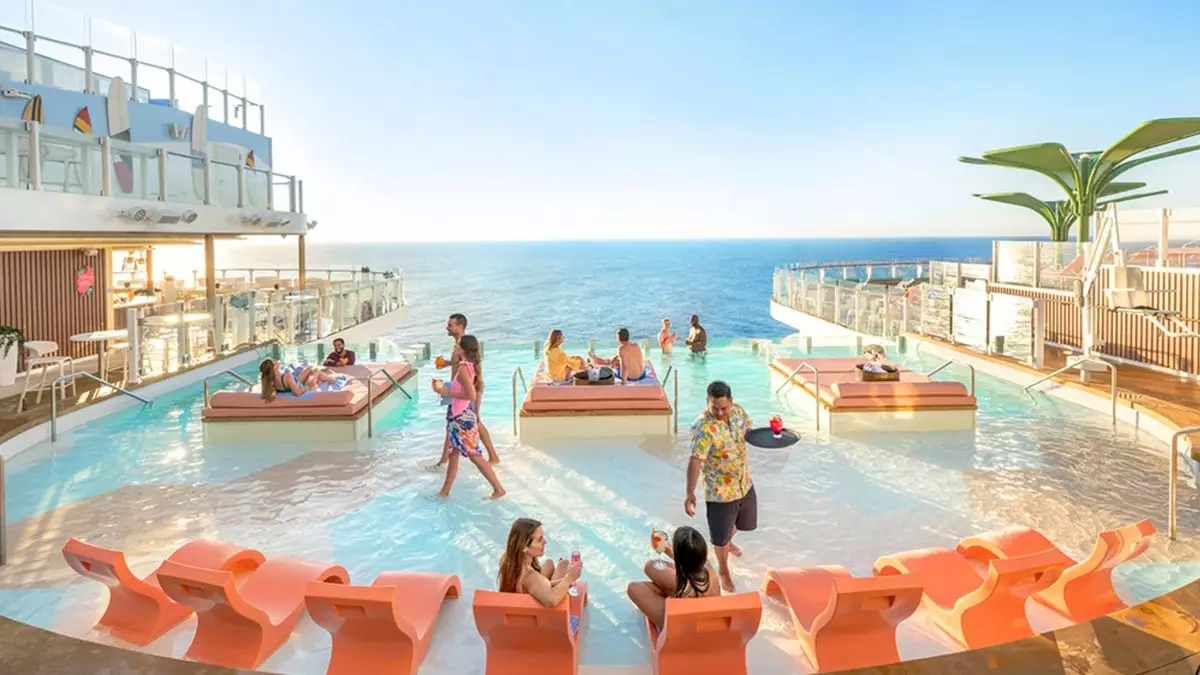The cruise industry has emerged as a robust sector in the travel and hospitality landscape, displaying a remarkable resilience even as other areas, particularly hotels, begin to show signs of slowing growth. As cruise lines continue to uplift their revenue projections, a thoughtful examination of the dynamics between cruise pricing and land-based vacation options reveals key insights into this ongoing success.
Robin Farley, a notable travel industry analyst with UBS, highlights a stark contrast between the thriving cruise sector and the cooling hotel industry. While hotels have been adjusting their revenue per available room (RevPAR) outlook downwards, the Big Three cruise companies—Carnival Corp., Norwegian Cruise Line Holdings, and Royal Caribbean Group—have consistently increased their financial guidance throughout the year. This apparent dichotomy raises the question: what underlies the cruise industry’s buoyancy in a time of fluctuating economic fortunes?
The analysis by Farley pivots around an essential point of interest: the price gap between traditional land-based vacations and cruise experiences. Historically, cruise executives have pointed out the economic advantages of cruises, highlighting the comprehensive value they offer in contrast to hotel stays. According to Farley’s report, the pandemic has sent prices soaring in both sectors but has created an intriguing landscape where cruises still present a compelling value proposition.
Price metrics serve to underscore the intensity of the shifts currently reshaping travel expenses. The report indicates a steep rise in hotel rates; U.S. hotels observed an average increase of 20% compared to 2019, while resort rates surged by 31% and rates in the Caribbean skyrocketed by 49%. These figures suggest that while travel demand may be robust, the costs associated with land-based vacations have significantly escalated, potentially steering consumers toward the cruise market.
Interestingly, the cruise industry has not seen such explosive price growth, though there are noticeable rate increases. Carnival Corp. reported a modest 6% increase in net per diems, while Norwegian and Royal Caribbean fared somewhat better, with rises of 9% and 16%, respectively. Nevertheless, the more vital insight lies in the relative differential between these figures and hotel pricing. Farley’s analysis indicates that cruise lines do not necessarily need to match previous pricing structures; rather, they must maintain a favorable position against the rising costs of hotels and resorts.
One of the more compelling arguments from Farley is the accelerated expansion of onboard revenue streams. This includes everything from dining options to excursions, enhancing the overall guest experience while creating additional revenue. The cruise industry’s “net per diem” metric integrates both ticket sales and this onboard revenue, offering a clearer picture of financial health beyond mere ticket sales.
In a post-pandemic landscape, onboard spending has flourished as cruise lines have increasingly incentivized pre-purchased experiences. Royal Caribbean’s improvements in guest spending, attributed partly to their private island investment, illustrate a strategic pivot that leverages unique attractions to foster revenue growth. Furthermore, Carnival disclosed that nearly 37% of its onboard revenue is generated from advance purchases, reflecting a shift in consumer behavior as travelers seek certainty and value in their vacation planning.
As the cruise industry navigates the complexities of the broader travel market, the strategic focus on optimizing both pricing structures and guest experiences appears crucial. With fluctuating economic conditions and shifting consumer preferences, cruise lines have a golden opportunity to enhance their value narratives further.
This combination of increased guest spending, innovative service offerings, and a sustained allure against the backdrop of rising hotel costs suggests that the cruise industry is positioned for continued growth. While the hospitality sector grapples with economic uncertainties, the cruise industry is carving out a unique and resilient niche that may offer substantial growth potential in the coming years, thereby reinforcing its status as a vital component of global tourism.


Leave a Reply